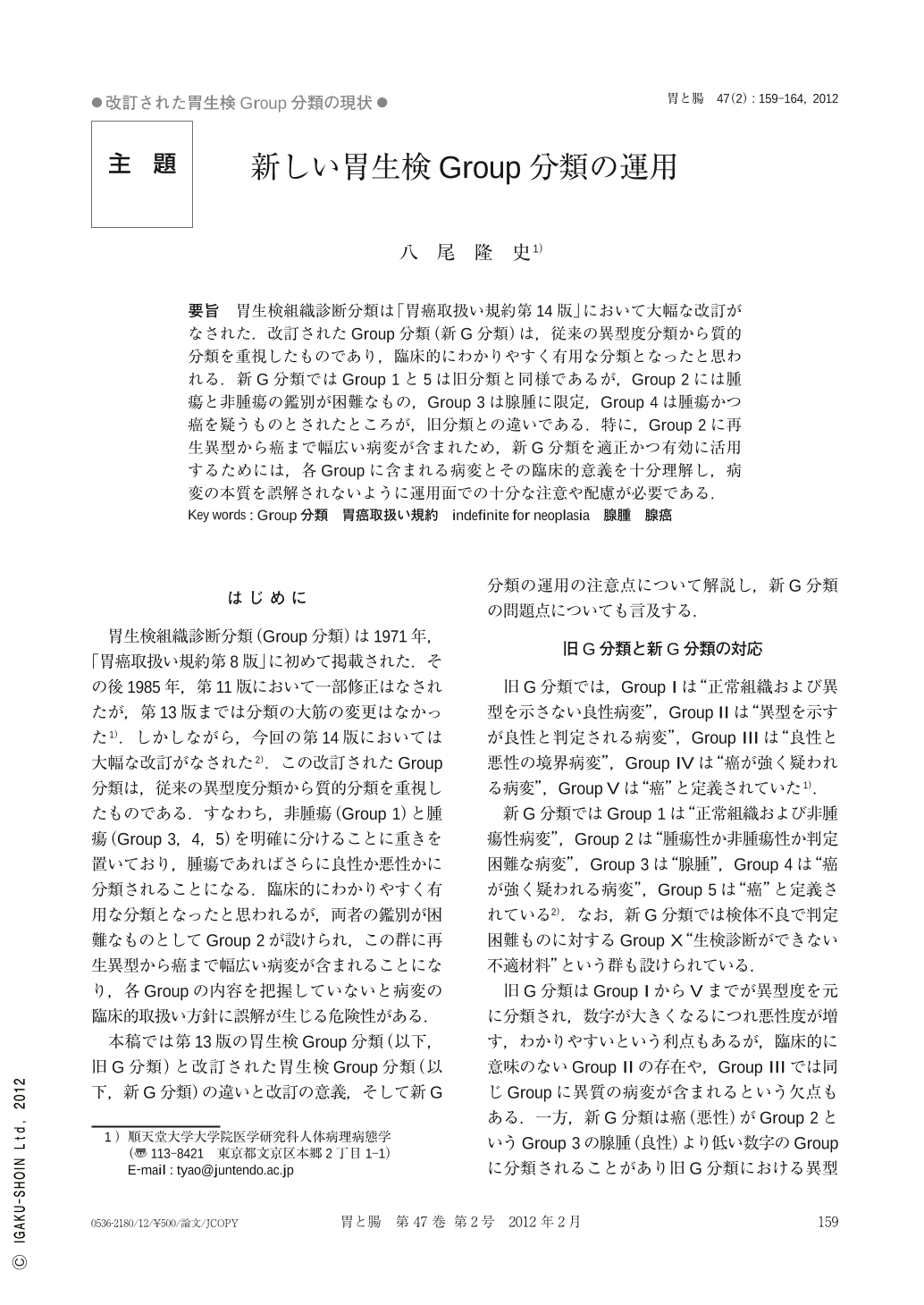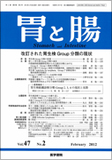Japanese
English
- 有料閲覧
- Abstract 文献概要
- 1ページ目 Look Inside
- 参考文献 Reference
- サイト内被引用 Cited by
要旨 胃生検組織診断分類は「胃癌取扱い規約第14版」において大幅な改訂がなされた.改訂されたGroup分類(新G分類)は,従来の異型度分類から質的分類を重視したものであり,臨床的にわかりやすく有用な分類となったと思われる.新G分類ではGroup 1と5は旧分類と同様であるが,Group 2には腫瘍と非腫瘍の鑑別が困難なもの,Group 3は腺腫に限定,Group 4は腫瘍かつ癌を疑うものとされたところが,旧分類との違いである.特に,Group 2に再生異型から癌まで幅広い病変が含まれため,新G分類を適正かつ有効に活用するためには,各Groupに含まれる病変とその臨床的意義を十分理解し,病変の本質を誤解されないように運用面での十分な注意や配慮が必要である.
Group classification(histological assessment of gastric biopsy specimens)has been drastically revised by the Japanese classification of gastric carcinoma(14 edition, 2010). The lesion is classified by its nature in the revised Group classification, while it was classified by degree of atypia. Therefore, the revised Group classification is easier to understand for clinicians than the previous one.
Groups 1 and 5 have no change, but, Groups 2, 3 and 4 have been revised. Group 3 can be only used for adenoma. Group 2 is defined as indefinite for neoplasia, in which, as a result, regenerative atypia, adenoma and carcinoma can be included. Group 4 is defined as neoplastic lesion suspected of being carcinoma, in which are included adenoma with high-grade atypia and carcinoma with low-grade atypia.
In order to avoid confusing the true nature of the lesion according to Group classification, careful description and explanation for diagnosis should be taken into consideration by the pathologist.

Copyright © 2012, Igaku-Shoin Ltd. All rights reserved.


